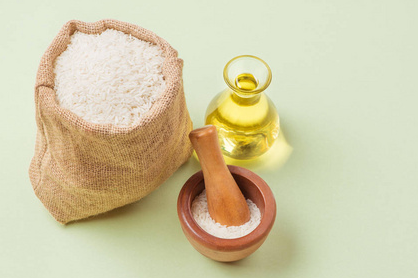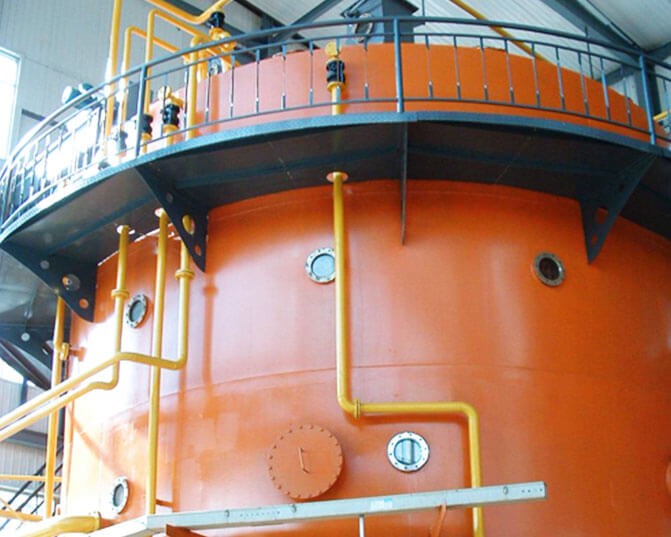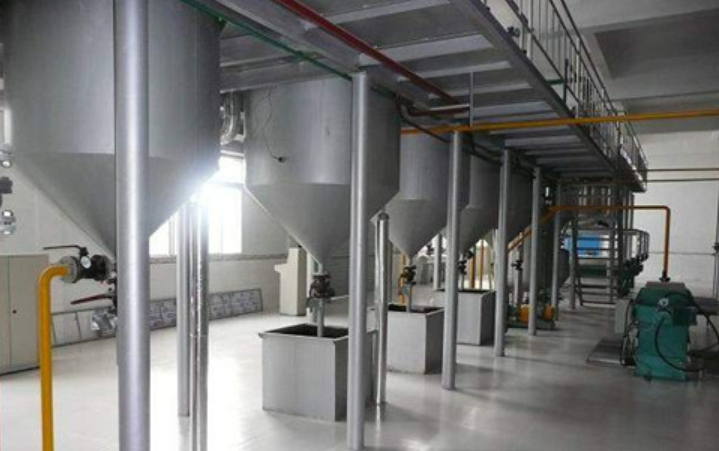Rice bran is the hard brown outer layer of white rice. It is a mixture of protein, fat and crude fiber. The oil content of rice bran is relatively low, 10-23%. Therefore, in order to have high economic benefits, Zhongxing’s engineers suggest to extract rice bran oil by puffing and leaching. And 100kg of brown rice can only get 5-8kg of rice bran, so if you want to build a rice bran oil production plant, you need to have enough raw materials, at least 20 tons of rice bran per day.

1. Why use puffing leaching method to produce rice bran oil?
One is because the oil content of rice bran is relatively low. If the squeezing method is used, the obtained squeezed oil is similar to the remaining oil in the cake, which will cause a lot of waste; if the puffing leaching method is used, the residual oil content in the rice bran meal will be less than 1 %, and the obtained meal can also be processed into animal food, which can increase additional profits. Second, because rice bran is easy to rancid, the rice bran obtained from the rice mill needs to be pre-treated, dried and stored after puffing to control the acid value without increasing rapidly. In this way, the rice bran can be stored for about a week.

2. Which rice bran oil production equipment is needed to make rice bran oil by puffing leaching method?
Rice bran needs to be pre-treated to reach a state suitable for leaching. The pretreatment of rice bran requires four steps: separation, preparation, puffing, drying, and then storage. The equipment used is a chaff separating sieve, a brewing pot, a puffing machine, and a flat-plate dryer.
Rice bran separation screen: used to separate rice bran and rice bran, it is a kind of equipment needed in rice bran production equipment.
Modulation pot: It is used to adjust the temperature and moisture of rice bran, which is beneficial to improve the subsequent puffing effect.
Extruder: Expand the raw material by pressurizing and then depressurizing, forming a porous structure, and improving the efficiency of solvent leaching.
Flat plate dryer: Dry the processed rice bran particles and store them.
Next, the rice bran will be transported to the rice bran oil extraction workshop. The leaching workshop consists of four parts: rice bran oil leaching, wet meal desolventization, mixed oil evaporation, solvent condensation recovery.
Rice bran oil leaching: The leaching process generally uses n-hexane (No. 6 gasoline) as the organic solvent. There are three commonly used extractors: flat-rotation extractor, ring extractor and drag chain box type extractor. Different output is suitable for different extractors, Henan Zhongxing’s engineers can design suitable solutions for you according to the actual situation.
Wet meal desolventization: the equipment used is steaming off machine (D.T.D.C). After desolventizing, baking, drying, and cooling, the solvent oil in the wet meal is evaporated to obtain dry meal. The residual oil rate of dry meal is less than 1%, and it can be used as animal feed.
Mixed oil evaporation: There are three main equipments at this stage: d evaporator, second evaporator and stripper. After the equipment is processed, the solvent oil in the mixed oil is evaporated and enters the next stage. The rice bran oil will be sent to oil tanks for storage or sent to the rice bran oil refining workshop.
Solvent condensation recovery: The second and third part of the evaporated solvent passes through the condenser, and then enters the solvent turnover tank for storage, and is recycled in the next production.

The crude oil produced in the leaching workshop will be sent to the refining workshop to obtain refined oil through four steps of degumming, deacidification, decolorization and deodorization. The refined rice bran oil can meet the national edible oil first-level standard and can be sold directly on the market. Rice bran oil refining equipment can be divided into three types according to different output and processes: 1-20 tons/day intermittent refining equipment, 20-50 tons/day semi-continuous refining equipment, and 30-1000 tons/day full continuous refining equipment.
Degumming: Add phosphoric acid or hot water to remove colloid by using the hydrophilicity of colloidal impurities. The main component of gum is phospholipids, so degumming is also called dephosphorization. Because phospholipids have strong water absorption properties, after adding hot water, the gums will gradually form large glial masses and settle down.
Deacidification: Add lye or use physical distillation to remove free fatty acids (FFA). The lye will neutralize with fatty acids to form soap feet, which can be used to produce soap. However, the fatty acids obtained by physical distillation have high value.
Decolorization: Using the principle of white clay adsorption to remove the pigment in the crude oil and make the oil color clear.
Deodorization: Pass in high-temperature steam to evaporate unpleasant odors. Then the oil is filtered again and pumped into other deep processing workshops or oil storage tanks.

Some customers want high-quality rice bran oil, and they require additional rice bran oil dewaxing equipment. The dewaxing equipment mainly includes three parts: crystal growth crystallization tank, plate and frame filter and cooling water circulation system.
Heating: The refined rice bran oil is heated to 55°C, the purpose is to break the original crystals in the oil.
Cooling and crystallization: The temperature is gradually decreased, so that the crystals will slowly precipitate and become larger. The crystallization process will last 12-24 hours.
Filtration: Use a plate and frame filter to filter rice bran oil to separate wax from rice bran oil.
If you need detailed rice bran oil processing equipment quotations or rice bran oil production plant project plans, please feel free to contact us.
Copyright © Henan Zhongxing Grain And Oil Machinery Co.,Ltd. All Rights Reserved. Powered by MetInfo